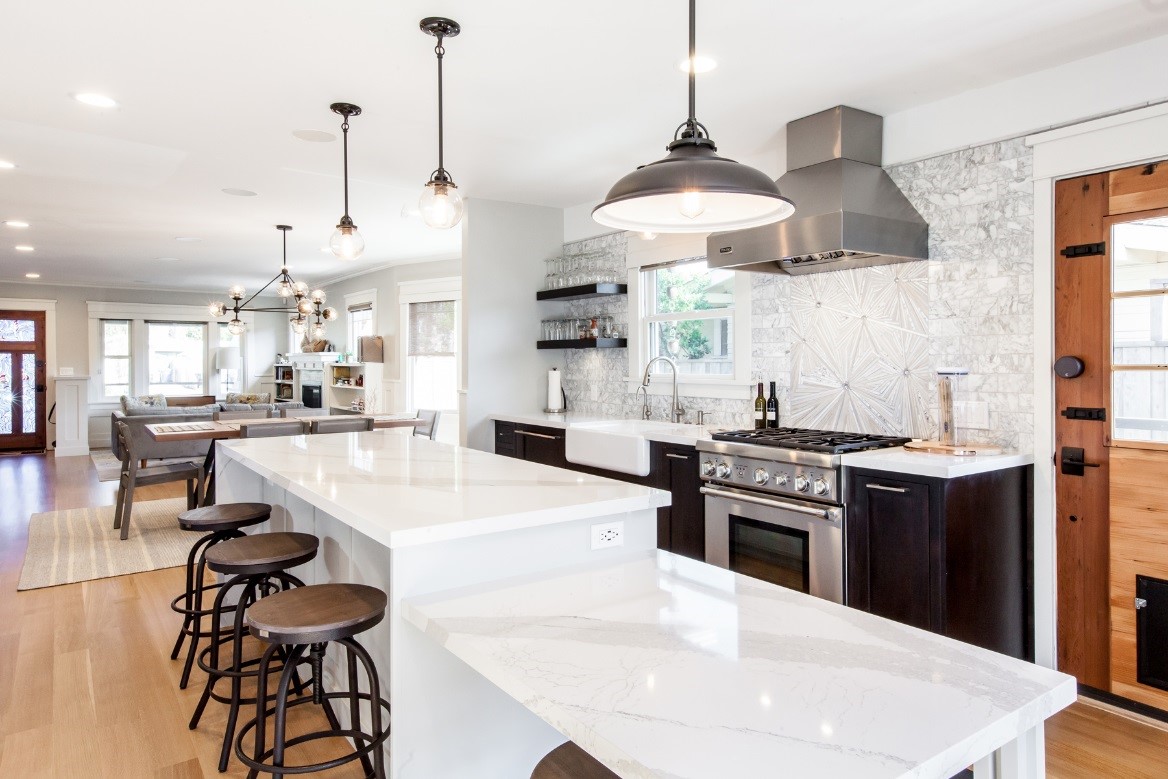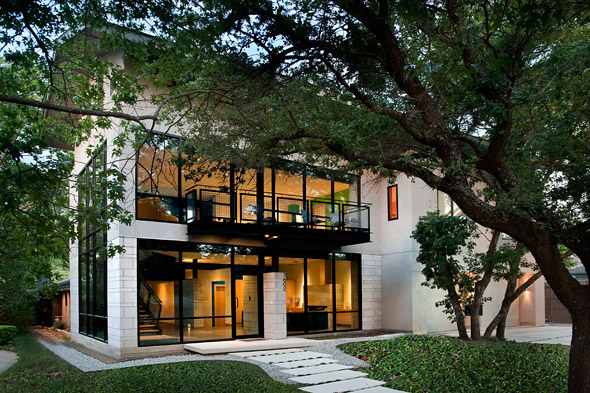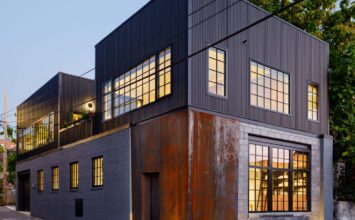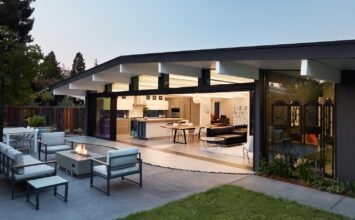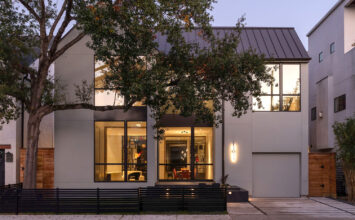 Photo: James Leasure
Photo: James Leasure
A Guest Blog by Kristin Andersen
Great lighting design can transform and completely set the mood of a room, but it can be a bit daunting knowing where to start and what to use! The first thing you should ask yourself is ‘what do I want to do in this room?’ Your answer to this one simple question is the key to a successful lighting setup!
But no matter what you are using the space for, a general rule of thumb is to have two types of lighting minimum. That is usually a combination of your ambient lighting teamed with accent lighting or task lighting where needed. Bigger spaces often use all three – the more variation the better!
This living/dining room uses lights that overlap from accent to ambient lighting. The effect adds warmth to the room.

Photo: Balboa Design, San Diego
AMBIENT LIGHTING
Ambient or “general” lighting will provide most of your illumination.
Immediately most clients think of recessed ceiling lights, but your overall ambient lighting can come from up-lights, downlights, sconces, pendants, or lamps, just to name a few.
The more sources, the better chance your lighting will eliminate unflattering shadows. (One of the biggest mistakes people often make is being overly reliant on one type of lighting. More variation means your lighting will create interest and balance in the space.)
Keep things interesting by teaming downlights with statement lighting and focus your downlights on the edges of the room. Direct the downlights light towards the walls, and they will reflect off the walls giving the illusion of a bigger space.
You can see the way the downlights are around the edges of this kitchen and how they reflect off the walls.

Photo: Balboa Design, San Diego
ACCENT LIGHTING
Accent lighting almost goes hand in hand with ambient lighting because it can add to the overall illumination of a space while highlighting features. In fact, this can be a foolproof way transform a boring space by creating interest from floor to ceiling.
And, since lighting has advanced so much in recent years, you can now do much more with your accent lighting without worrying about having too many lights on. (LED lighting is perfect for accent lights, for a classic look warm white is ideal for accent lighting and what I would recommend. LED lights also last longer and are better for electricity bills and the environment!)
Lighting like this is a great way to incorporate pendants into a bedroom, particularly if the ceiling is lower, as a central pendant might hang too low over the bed. These bedside pendants not only look fantastic, but illuminate the space and provide task lighting while keeping the bedside tables clear.

Photo: Balboa Design, San Diego
TASK LIGHTING
Task lighting is essential to a home, but works best when it’s subtle and doesn’t over power a space. It’s low intensity is perfect when you need better lighting to perform tasks in a small space like a desk or a kitchen countertop.
When using task lighting for your desk the most common mistake is using any lamp that looks good! Style is important, but when you’re trying to get serious work done, it’s better to buy lamps specifically for desks or mounting lights above the desk area in front of where your face is. You don’t want your own shadow, or that of a poorly conceived lampshade, to block your light.
Task lighting in the kitchen is one of the bigger jobs in the house because you want to light up all areas without overpowering the other lighting.

Photo: Balboa Design, San Diego
In the kitchen, one of the most useful, aesthetically pleasing, AND practical (and how often do all of these things meet?) areas for task lighting in the kitchen is under the kitchen uppers.These lights are perfect when mounted under the cabinets to eliminate shadows, or concealed strip lighting also works well.
Pendants above your kitchen counter or island are another popular way to gain task lighting that looks great. On important tip – this is done best by using shaded pendants so the light is directed down onto the counter and not hung too low.
One last thing – the best way to guarantee that your lighting will work together and not over power other sources is to have all the lighting on separate switches with dimmers, that way you can adjust your lighting to suit whatever activity you are undertaking!
So what’s the secret? Planning out where you want your lighting, using two or more types of lighting in every space and focusing on what is right for you, not just what is in fashion!
 27 year old San Diego based Interior Designer Kristin Anderson was born and raised in Melbourne, Australia. She recently completed her Diploma in Interior Design with the Interior Design Institute Australia. Prior to her international move she worked in commercial and residential lighting and pursued Interior Decorating, and has a passion for Mid-Century and contemporary design. She is launching her US-based Interior Design firm later this year.
27 year old San Diego based Interior Designer Kristin Anderson was born and raised in Melbourne, Australia. She recently completed her Diploma in Interior Design with the Interior Design Institute Australia. Prior to her international move she worked in commercial and residential lighting and pursued Interior Decorating, and has a passion for Mid-Century and contemporary design. She is launching her US-based Interior Design firm later this year.
